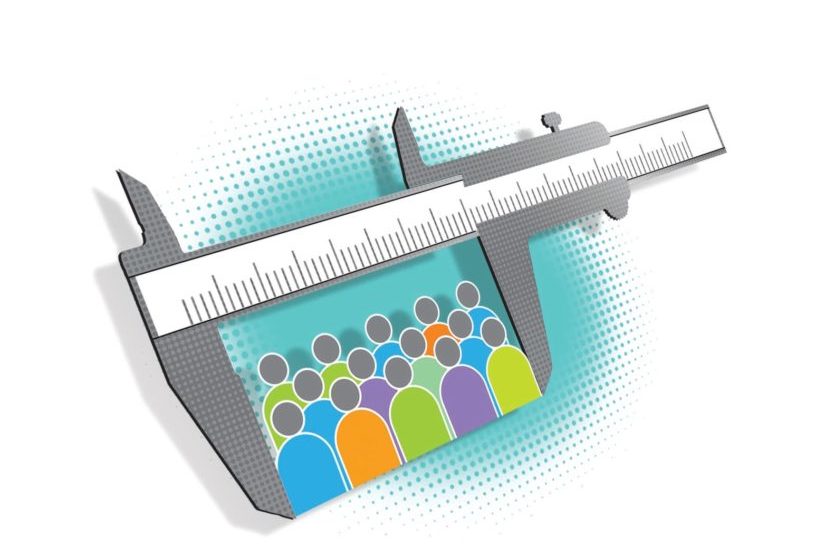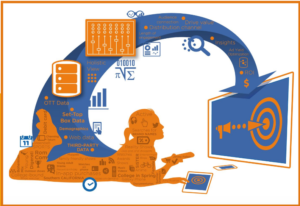Connections

M&E Journal: Make More of Measurement: Ad Optimization for Increased Revenue
Story Highlights
By Colleen Quinn, Marketing Director, Teradata
Audience measurement has long been a labored and imprecise exercise in “getting to know you” by broadcasters and cable networks. On the flip side, advertisers have historically been forced to make big buying decisions based on coarse demographic and third-party data. But, in today’s data-driven ecosystem, simply knowing which age group or gender best connects to a show or character isn’t enough. Advertisers want control to reach the right audiences at the right time. Every ad unit has the power to drive massive brand value, and knowing your audience determines how valuable and for whom.
The changing face of audience measurement: Though many of today’s content distribution channels can capture detailed consumption data, we still rely on the tried-and-true means of audience measurement. Third-party providers, like Nielsen, offer content owners sample data in audience size and length of engagement. Demographic information, such as age, gender, and income, helps to determine basic audience traits. Now, we can layer this information with new data sources and insights that content owners themselves possess. With OTT, web, and set-top box data, it is now possible to see a much more nuanced view of these audiences, making the process of determining ad value more specific than ever.
From simply ‘advertising’ to ad optimization
While it seems that access to detailed consumer and audience data is no longer an issue, few broadcasters and content distributors are truly tapping into the value of new analytics and deeper measurement. The challenge is compounded by the difficulty in driving advertiser adoption of a new measurement currency—even if that promises vastly greater campaign ROI. So, how can we move from simply offering advertising inventory to building better advertising opportunities?
Broadcasters and networks are now not only expected to deliver content across multiple channels—they also need to offer the compelling insights that drive advertisers to invest in their programming. By building an advertising sales and measurement repository, content distributors can enable insights around transactions and interactions with their audience. A data-driven advertising management platform lays the foundation for further analytic insight with respect to advertising optimization. Key functions include:
Audience segmentation and match
The explosive growth of digital viewing—including mobile, over-the-top, and video-on-demand— means that audiences are more fragmented. Still, these alternative channel consumers can reveal loads of information about content preferences and user segments. This data can then be translated back to traditional advertising and broadcasting environments.
The old rules of measurement (based on one set of industry standard metrics, such as Nielsen ratings) are being challenged as new data from alternate channels reveal the actual habits and patterns of content consumers. Whether that data is derived from social channels, site registrations, purchase intent, email sign-ups, or other declared and derived forms of identification, digital data creates more analytic opportunities to meaningfully segment and match advertising to viewing preferences.
Yield management
Making compelling content is no secret for broadcasters and networks. The real question is whether they are pricing advertising inventory to generate the greatest revenue and return. Companies need to ensure they are able to manage ad yield to fully sell all inventory at the best possible price.
 Being able to proactively manage ad availability— and balance that against historical sales transactions and performance—allows advertising sales organizations to easily tune the necessary knobs to increase or decrease ad rates in accordance with inventory demand.
Being able to proactively manage ad availability— and balance that against historical sales transactions and performance—allows advertising sales organizations to easily tune the necessary knobs to increase or decrease ad rates in accordance with inventory demand.
And, with new audience insights delivered through comprehensive measurement, ad sales teams have new muscle to demonstrate value to advertisers, potentially commanding higher ad rates than a traditional measurement data set might support.
An advertising management platform allows content distributors to integrate digital, traditional, and sales advertising activity from all of their various platforms (broadcast, mobile, Web, radio, cable network, and more). Once in place, companies can create precise audience segments and advertising matches, which create more value to ad sales teams— and the advertisers themselves—by delivering the right audience for the right message.
An advertising management platform also enables accurate pricing models to balance ad value with inventory, so that the highest possible revenue is achieved.
Centralizing ad measurement to glean insights
Once a centralized audience measurement repository has been established, these combined insights can be put to work. Now, content distributors can begin to effectively optimize ad yield.
Take, for example, the case of a large U.S. cable network. Teamed with analytics leader Teradata, the network first integrated traditional and “new” forms of audience data from multiple sources, including Nielsen, Rentrak, and its own OTT and VOD data. It deployed this on a hybrid data platform that included Hadoop, cloud, and AWS. Then, it developed a series of dashboards and tools which allowed it to dynamically monitor and price broadcast ad inventory using the new audience measurement view.
This allowed the network to create a more value-oriented service for advertisers by providing information about the characteristics of certain audiences. It also moved from a monthly reporting structure, to one that reports daily, providing near-immediate feedback to advertisers about campaign and demographic performance.
The network’s advertising management platform enabled access to all third-party data in one place, and allowed it to justify ad value through a comprehensive view of ad performance across various channels and platforms.
Evolved ad analytics are here
By creating a platform to centralize ad measurement and act on those insights to improve yield, both sellers and buyers in the advertising ecosystem can win.
Broadcasters and networks can now easily demonstrate near real-time value to their advertisers, while using that insight to boost ad revenues. Advertisers can more effectively reach their desired audience, further realizing ROI value from ad campaigns.
These insights and improvements aren’t limited to cable and broadcast ad sales. Content distributors are now better prepared to sell ads across all channels by tapping into the same information and insights.
Evolved ad analytics move the advertising industry toward a more virtuous data circle, where content distributors can better determine ad value, while helping advertisers determine how much of their ad budget to spend and where.
Click here to translate this article
Click here to download the complete .PDF version of this article
Click here to download the entire Spring 2016 M&E Journal









